Podcast: Download (Duration: 33:08 — 31.1MB)
Get Notified Of Future Episodes Apple Podcasts | Spotify | Amazon Music | Android | Blubrry | Gaana | TuneIn | Deezer | Anghami | RSS | More
Writing and publishing a book is a goal for many, whether for personal, income, or business reasons. Chandler Bolt’s self publishing school has helped thousands tick the authoring box, and he’s back on the show to discuss the latest and most relevant realities of self publishing.
He and James will talk about the benefits people gain when they self-publish a book.
They’ll go through Chandler’s framework for how to write a book step by step.
And Chandler will make the argument that everybody should consider writing a book.
Table of contents:
1. In case you don’t know Chandler…
2. What have been the hurdles?
3. Success defined in terms of impact
4. The changes in the self-publishing field
5. Chandler’s process behind book-writing
6. The way Chandler teaches people
7. What if you already have a book?
8. Setting the expectations
9. The results that people get
10. So can anybody write a book?
11. How having a book benefits James
12. Winding down the episode
In case you don’t know Chandler
Chandler Bolt has been on the show thrice before, and has some impressive credentials. An investor and the CEO of self-publishing.com, he’s known for his expertise in self-publishing and helping people write books, increase their income, and achieve greater impact in their business or personal endeavors.
Chandler is a bestselling author seven times over, and has been recognized as a Forbes 30 Under 30 honoree. He’s also the host of the 7 Figure Principles podcast and the Self Publishing School podcast.
His company, selfpublishing.com, has been listed in the Inc. 5000 for four consecutive years as one of the fastest-growing private companies in the US.
Chandler also founded an entrepreneur house in San Diego, where he surrounded himself with like-minded individuals to foster personal and professional growth.
Inspired by the idea that one becomes the average of the five people they spend the most time with, he sought to live with people who excelled in different areas of life, such as business and health.
The house still exists today with new cohorts of people, although Chandler has since moved to a more permanent location.
What have been the hurdles?
James wants to know, what challenges has faced since their last conversation?
One major hurdle, says Chandler, was related to leadership and scaling his business. While he didn’t encounter the early revenue challenges that many others do, he had to deal with issues like a business partner trying to remove him from the company, significant debt, and borrowing from his parents’ retirement fund to buy out his partner.
Chandler acknowledges, however, that the growth problems he faced were ultimately his responsibility as a leader, and called for self-reflection and personal growth to overcome these obstacles.
In the process of scaling from seven figures to eight figures, Chandler recognized the ongoing need to learn and adapt. He reflects on the lessons James taught him early on, such as the concept of leveraging work and creating evergreen assets in the business.
Chandler acknowledges that revisiting these lessons is essential for continued growth and success.
Success defined in terms of impact
Chandler defines success in terms of impact, particularly in relation to the number of authors he has helped write and publish books. He believes in leveraging the power of books to achieve reach, transforming one-on-one conversations into one-to-many experiences.
Through self-publishing.com, Chandler’s company has facilitated the publishing of over 7,000 books in the past eight years, combining the best benefits of traditional publishing and self-publishing for authors, such producing a quality book while retaining rights and royalties.
The business’s ultimate aim is to publish 100,000 books by 2035. Although they have made significant strides towards that, Chandler acknowledges they have a long way to go in achieving their ambitious goal.
The changes in the self-publishing field
In an era of readily available information and AI-generated content, is there still a demand for books?
Chandler realizes that information has become commoditized. Competition in his field, too, has increased, with numerous authors-turned-teachers in the self-publishing space.
He highlights the aspects of AI that can help authors, such as generating book descriptions, titles, subtitles, and keywords for ads. He mentions the availability of AI editing software and tools that can lead to better books at a lower cost.
Despite the influence of AI, Chandler believes books will continue to thrive, because people appreciate the experience of reading physical books in the absence of distractions. And to his mind, authenticity and human connection cannot be replicated by AI – readers still value personal experiences and relatability.
James shares his own preference for physical books and a peaceful environment in which to enjoy his reading. He, too, acknowledges the usefulness of AI in areas like chapter review and outlining. He has some concern, though, about influencers who push the quick creation of low-quality, auto-generated books.
Chandler’s process behind book-writing
What does writing a book look like now, asks James, given the availability of new tools? Has Chandler’s process changed any?
Chandler says that while the core elements of good writing remain timeless, he has developed a framework to guide the book-writing process.
The framework consists of eight milestones, the first four composing the MORE writing method: mind map, outline, rough draft, and editing.
Mind mapping and outlining involve generating ideas on the topic and grouping them into themes or sections. Based on that, the rough draft is written chapter by chapter, followed by editing.
Just the MORE writing method can help people write better books faster. Chandler also mentions that AI can assist in content generation and idea connection.
The other four milestones involve editing (both self-editing and professional editing), formatting, cover design, and book launch.
James appreciates the simplicity of Chandler’s framework. He believes strongly in having a framework in general for any process.
The way Chandler teaches people
Chandler’s teaching approach is a combination of coaching, education, and services. The goal is to save people time and money while helping them write a high-quality book that sells well.
Through coaching, templates, and pre-formatted documents, Chandler guides authors through the writing process, providing support and resources to smooth the way.
Additionally, Chandler’s team offers services in the final stages of publishing, such as cover design, formatting, ISBN assignment, uploading, SEO optimization, and book description. By handling these detailed tasks, they let authors focus on improving their book and implementing marketing strategies.
Chandler also emphasizes that authors retain all rights and royalties to their books and have the freedom to the finished product as they wish.
The teaching program involves an upfront fee, and authors have the flexibility to choose how they want to utilize the materials provided.
What if you already have a book?
And can people bring a book to Chandler for just the second part of the program?
People can absolutely bring their written manuscripts to him, even if they haven’t gone through the initial stages of the writing process with his guidance.
Many authors find themselves in a situation where they have published a book without effectively marketing it, resulting in poor sales. A significant number of self-published books, in fact, sell less than a hundred copies on average, highlighting a need for proper marketing strategies.
James appreciates the idea of submitting a manuscript and getting help with the challenging aspects of publishing, such as formatting, cover design, and marketing.
Reaching out to self-publishing.com, says Chandler, is a good starting point for authors who want help with getting their books into the market.
Regarding book quality, Chandler explains that they don’t dictate what authors can or cannot publish, since they are not a traditional publisher. However, they do provide feedback and challenge authors to produce material that will appeal to readers.
While respecting authors’ freedom of expression, Chandler stresses the importance of maintaining high standards and aligns his recommendations with what will be best for readers and for the book’s success.
Setting the expectations
What would be a realistic timeframe from start of writing to publishing, asks James? (That’s ignoring the outliers who spit out a book in two days, and the laggards who take years.)
Chandler puts the typical timeframe for publishing a book, from starting the process to getting it into the market, between nine to 18 months.
While there are indeed people who can do the job in a matter of days or even complete multiple books within three months, they are not the norm.
Chandler actually published a book himself in 105 days, while running a multi-million dollar business. He did it, however, to prove a point, and admits it was much faster than the average pace.
For most people, the timeframe falls within the range of six to 12 months, with some individuals taking up to 18 months if they prefer a more leisurely approach.
Chandler mentions the concept of Parkinson’s Law, that work expands to fill the time allotted to it. Even traditionally published books often take around two years, but the majority of the writing is typically completed in the last 60 days leading up to the manuscript deadline.
Given this, Chandler’s program sets deadlines and implements checkpoints throughout to keep authors on track and moving forward.
The results that people get
James is interested in the impact people can achieve through writing a book, whether it’s measured by being on a bestseller list or generating prospects for their information business.
In Chandler’s company, they focus on three main metrics: income, impact, and business.
The income aspect is about the royalties from a book, even if it’s not a significant amount, as well as the potential to go full-time as a writer. Impact centers around leaving a lasting legacy for future generations, and the meaningful influence the book can have on people’s lives. Lastly, the business aspect deals with leveraging the book to generate more leads, sales, and referrals for one’s business.
Chandler aims to maximize each author’s specific objectives. They have witnessed the creation of six and seven-figure businesses, as well as significant real estate investment funds, all stemming from a book that served as a powerful tool for raising funds and attracting opportunities.
The first edition of Chandler’s own book, “Published,” generated millions of dollars in sales for his business. James’s book, Work Less Make More, has led to readers joining his coaching program, implementing the book’s advice, achieving results, and subsequently reinvesting in his services.
Both Chandler and James emphasize the value of books in providing real results and building relationships with potential customers, as they offer actionable content and demonstrate their expertise in advance, creating an impression that can lead to further business opportunities.
So can anybody write a book?
Now, can anyone write a book? Or is it the domain only of exceptional creativity or talent?
Chandler used to believe strongly that not everyone could write. A friend changed his perspective: Did Chandler ever wish he had a book by his grandfather? Chandler’s grandpa died when he was one, and yes, Chandler would be happy to have a book written by him.
Chandler now believes writing a book should be a rite of passage, something people can do in their retirement years to leave a legacy for their children and grandchildren. He sees it, too, as a cathartic experience.
Writing a book, says Chandler, doesn’t require knowing everything. You just need to know a little more than the person you’re teaching.
His leader from Boy Scout days told him, when encountering a bear, you don’t have to be faster than the bear, just faster than your friend. Similarly, in writing a book, you needn’t be the next Oprah or Tony Robbins, but just connect with readers who relate to your experiences and perspective.
James treasures the legacy of his great grandfather’s diaries, illustrating the value of documenting one’s experiences for posterity. He also mentions that his father, now in his 80s, is currently writing his own book, and the current tools available are a great help.
How having a book benefits James
James’s book fits nicely into all three of Chandler’s mentioned buckets – income, impact, and business.
The passive income, first of all, generated from platforms like Audible and Amazon, continues to come in even years after publishing.
Secondly, James has dedicated his book to his kids, as a source of pride and a lasting legacy.
Finally, the book acts as a powerful business tool, a sort of weighty business card.
James leverages his book strategically in his business, giving away the PDF version on his website and offering the physical copy and audio version as upsells. He even accepts the minimal profit or breaks even on the physical copy because he wants it to reach the hands of people considering his help.
Recognizing the benefits of having a book, James recommends it to every person he coaches, often referring them to Chandler’s book, “Published,” and providing links to Chandler’s training materials on his website.
Winding down the episode
Considering Chandler’s numerous projects. James appreciates his coming on the show.
And Chandler’s success is no surprise to James. Chandler’s dedication and responsibility can only contribute to his achievements.
Chandler highlights the importance of surrounding oneself with great people, and acknowledges James as one of the first to promote his work. He sees himself as a product of James’ teachings and principles.
Future episodes with Chandler are hopefully to come, and James fully intends to apply Chandler’s framework to his own stalled book projects.
Free copies of Chandler’s book, Published, are available at publishedbook.com/james.
And for a taste of Chandler’s training, check out his writing and publishing workshop.
Liked the show? Leave us a review on iTunes
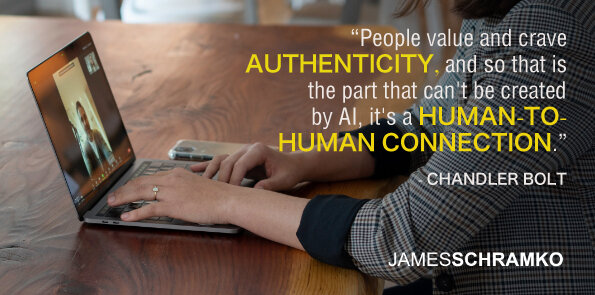
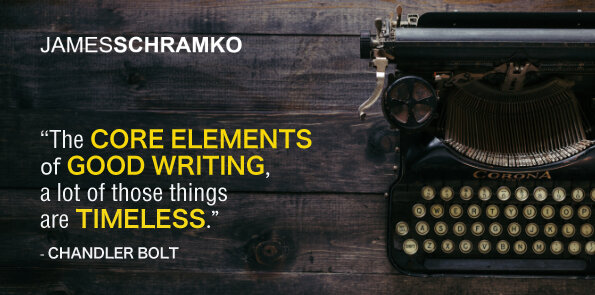
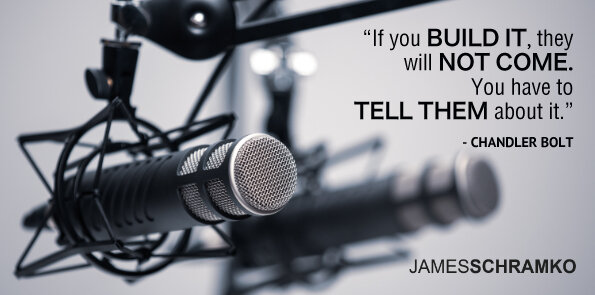
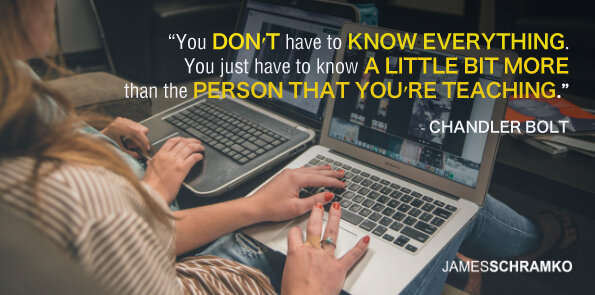

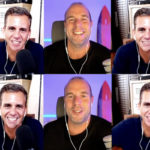
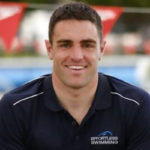






Leave a Reply